Étiquette : William Kapell
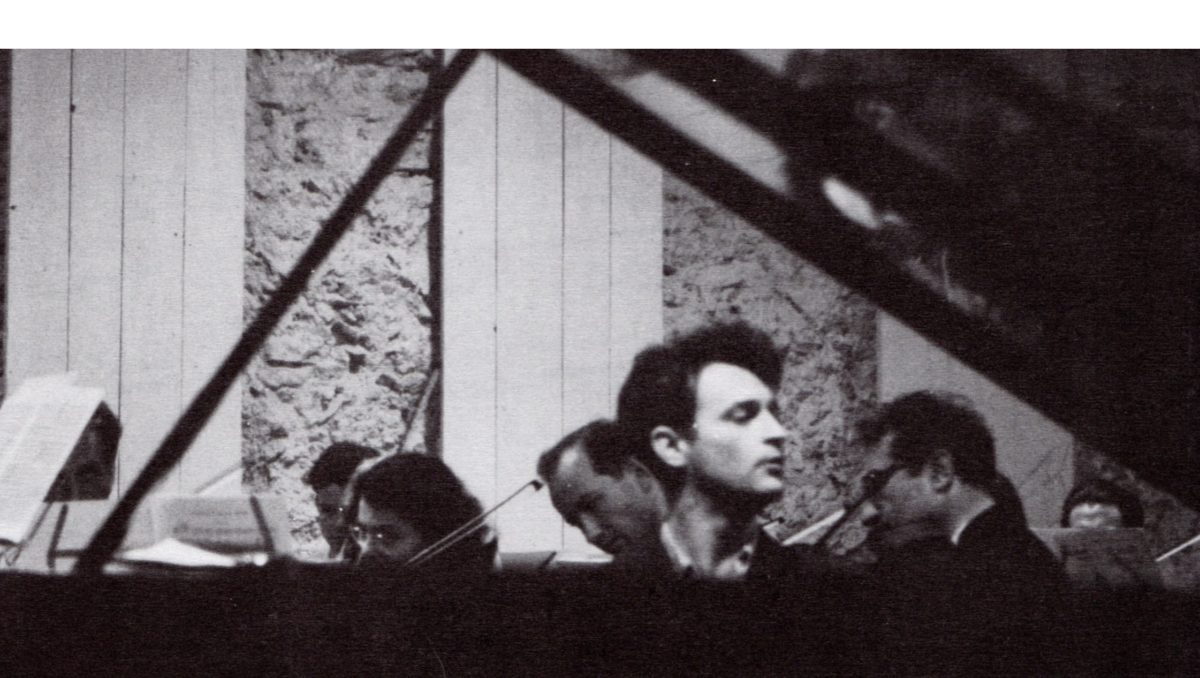
William Kapell – Dimitri Mitropoulos NYPO
Carnegie Hall – April 12 1953
Source: Bande/Tape 19 cm/s / 7.5 ips
La source utilisée jusqu’à présent pour les rééditions de cet enregistrement présente un spectre de fréquences tronqué dans l’aigu, ce qui se traduit par un son quelque peu étouffé qui empêche d’apprécier la splendeur sonore du piano de William Kapell (1922-1953), et aussi de l’orchestre.
La bande recopiée ici est en tout point supérieure et permet de restituer enfin cette grande interprétation que Kapell a donnée pour sa dernière apparition à New York avec un orchestre.

Pour sa dernière saison complète, Kapell a joué à travers les Etats-Unis un ambitieux programme de concertos, avec notamment trois apparitions à New-York, à savoir les 27 et 28 novembre 1952 (avec Dimitri Mitropoulos) pour le Concerto N°17 K. 453 de Mozart qu’il rejouera à Prades l’été suivant sous la direction de Pablo Casals, le 30 décembre 1952 pour le 3ème Concerto de Prokofiev avec le Philadelphia Orchestra (direction Alexander Hilsberg) et enfin les 11 et 12 avril 1953, pour le Concerto n°1 de Brahms, en lieu et place du 3ème Concerto de Prokofiev prévu initialement:
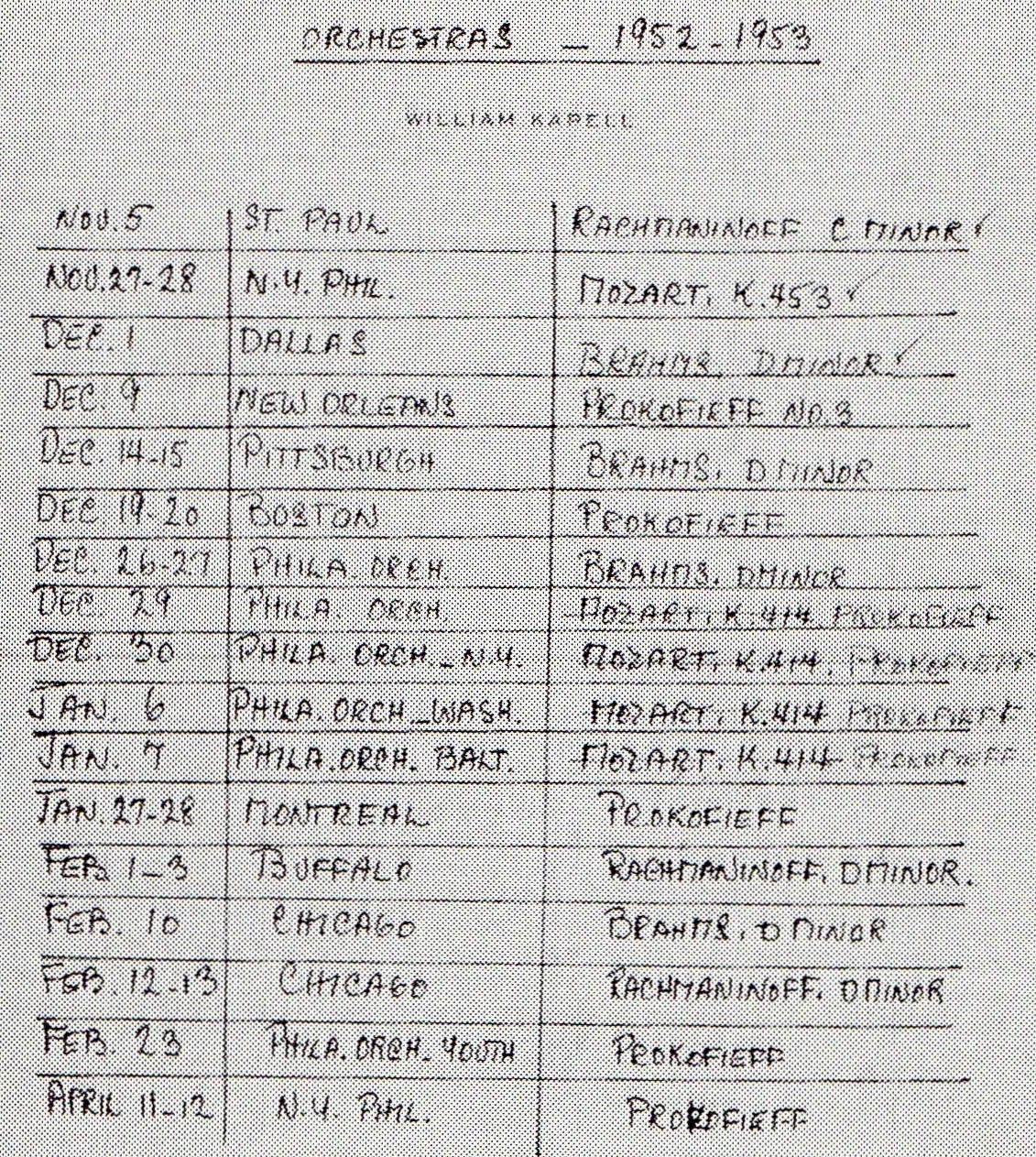
Après le concert du 1er décembre à Dallas avec le Concerto Op.15 de Brahms, le chef Walter Hendl lui a adressé une lettre dans laquelle il écrivait: « I have come to the conclusion that you are the great American pianist » (« J’en suis arrivé à la conclusion que vous êtes le grand pianiste américain »).
Les archives ont conservé des copies annotées des programmes des deux concerts des 11 et 12 avril 1953, et il y a de grandes différences de minutage: le 12, pour le concert radiodiffusé, les premier et deuxième mouvements durent chacun environ une minute de plus.
Nul doute que le pianiste et le chef ont modifié leur approche, probablement lors de la répétition pour le concert du dimanche, qui n’a pas le même programme que le précédent.
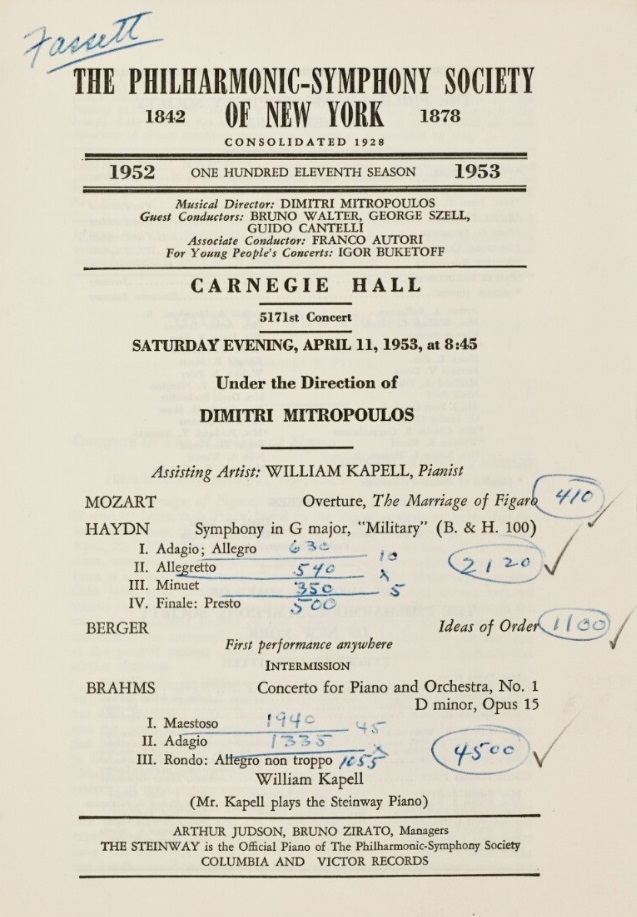

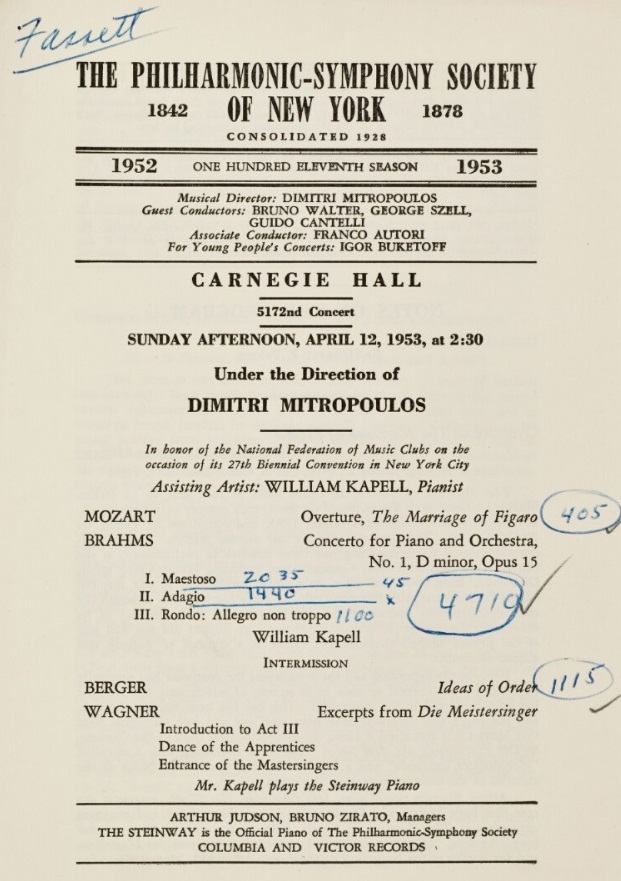
Bien sûr, un minutage différent n’est qu’une vague indication, mais fort heureusement, Harriett Johnson, critique du New York Post a assisté aux deux concerts et nous donne ainsi de précieux commentaires. Ainsi, lors du deuxième concert, l’interprétation était selon elle beaucoup plus détendue et de ce fait beaucoup plus éloquente. Dans ce contexte, elle pointe une tendance du pianiste à se laisser entraîner par sa propre intensité, d’où un excès de tension, une virtuosité trop marquée et une sonorité métallique. L’interprétation de l’Adagio est notée pour son intensité pénétrante, sa vitalité rayonnante et la beauté du phrasé. L’article du Musical Courier (May 1, 1953) va dans le même sens en soulignant, en ce qui concerne le premier concert, la chaleur rhapsodique de l’interprétation, mais aussi le tempo très rapide du premier mouvement, la grande virtuosité et un côté parfois plutôt percussif du jeu du pianiste.
Quoiqu’il en soit, avec ce concert radiodiffusé, nous disposons de la meilleure des deux prestations des interprètes, soliste et chef.
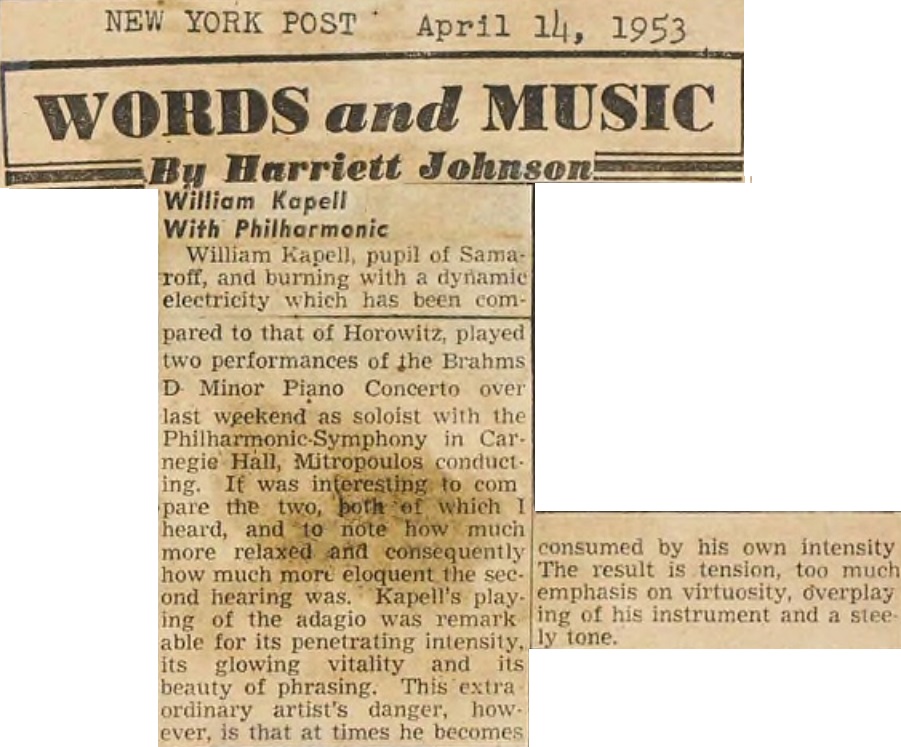
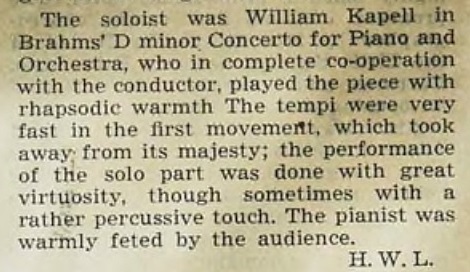
Musical Courier May 1, 1953 (critique du concert du 11 avril)
________________
The source that was used for the previous re-issues of this recording is truncated in the high frequencies, so that the sound is somewhat muffled which does not allow to appreciate the splendid piano sound of William Kapell (1922-1953), and also the orchestra.
The tape dubbed here is vastly superior and fully allows to hear the great performance given by Kapell for his last orchestral concert in New-York.
Fot his last complete season, Kapell performed through the United States an ambitious program of concertos, with no less than three programs in New York, namely on November 27 and 28, 1952 (with Dimitri Mitropoulos) for Mozart’s Concerto N°17 K. 453 he would later perform at the Prades Festival the following summer under the direction of Pablo Casals, on December 30, 1952 for Prokofiev’s Third Concerto with the Philadelphia Orchestra (conducted by Alexander Hilsberg) and to end with, on April 11 and 12, 1953 for Brahms’ First Concerto, instead of the previously scheduled Prokofiev’s Third Concerto.
After the December 1st, concert in Dallas with this Brahms Concerto, the conductor Walter Hendl sent him a letter in which he wrote « I have come to the conclusion that you are the great American pianist ».
The archives have kept annotated copies of the programs of both concerts of April 11 and 12, 1953, and there are major differences in timings: on the 12th, for the broadcast concert, each of the first and the second movements lasts about one full minute longer.
It is clear that both pianist and conductor have reconsidered their approach, probably during the rehearsal for the Sunday concert, whose program is different.
A different timing is of course merely a vague indication, but quite happily, Harriett Johnson, critic for the New York Post attended both concerts and provides us with precious comments. Indeed, at the second concert, the performance was for her much more relaxed and consequently much more eloquent. In this context, she points out the pianist’s tendency toward becoming consumed by his own intensity, the result being tension, too much emphasis on virtuosity, overplaying of the instrument and a steely tone. According to her, the performance of the Adagio was remarkable for its penetrating intensity, its glowing vitality and its beauty of phrasing. The article in the Musical Courier (May 1, 1953) goes in the same direction. It underlines, as far as the first concert is concerned, the rhapsodic warmth of the performance, but also the very fast tempo of the first movement, and the pianist’s great virtuosity and his sometimes rather percussive touch.
Be it as it may, with this broadcast concert, we have the best of the two performances, both for the soloist and the conductor.
Les liens de téléchargement sont dans le premier commentaire. The download links are in the first comment.



